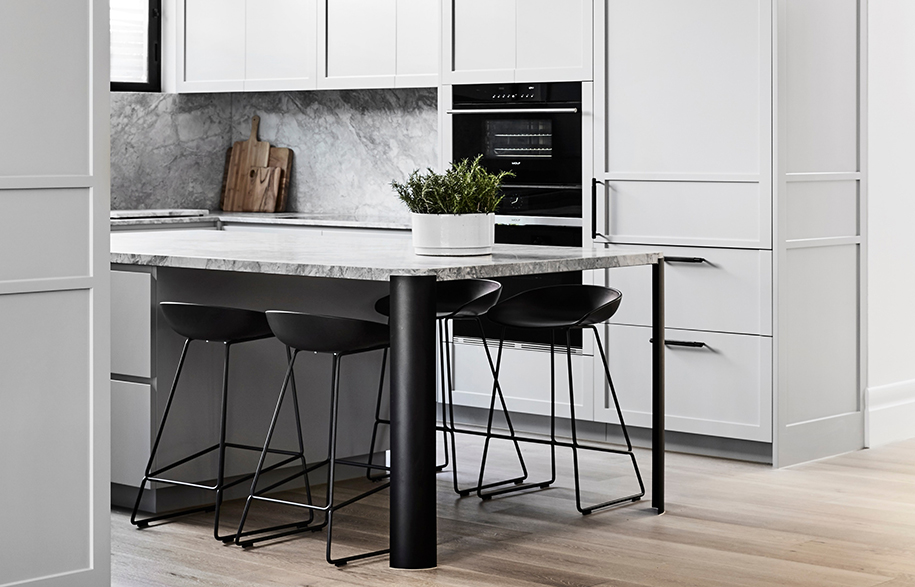The kitchen, as ubiquitous as it now feels, is a constantly evolving space. Ever shifting to the needs and utilities that we trust upon it to ease our daily run-around. We all know what lies in the top drawer, but what now feels inherent and natural is the result of years of adaptive design.
The evolution of the kitchen is currently realised in elegantly integrated spaces that would be hardly recognisable to the homemakers of yesteryear. Welcome to the new phase of the kitchen, a space that is decidedly clean looking in response to our increasingly excessive lives.
“We live a very busy, hectic life,” says Miriam Fanning (Mim), managing director of Melbourne-based interior design practice Mim Design. “To be able to have some spaces that don’t feel so hectic and cluttered is a really nice and refreshing change within our own internal environments.”
With a fridge that blends into a cupboard and a stove that dissipates into the bench top, one can feel as though everything is finished, tidy and away. And the benefits of an integrated kitchen allow for an architect or interior designer’s conceptual fit-out to come to life without having to appease the old bulky necessities visually disrupting the space.
Integrated doesn’t have to mean an entirely bare or empty kitchen. The art is to choose a favourite piece, or pieces, and diffuse other elements into the background to direct one’s attention to showcase the beautiful and quieting what’s left. “It might just be one or two pieces of equipment that you want to stand out, it doesn’t have to be the whole lot.
“A dishwasher, for example, always looks better fully integrated because it’s there for a purpose, says Mim. “It’s not there show off. If people loved dishwashers that much they’d have glass fronts so you could see all of the dirt getting washed off, but that’s not really something you want to see.”
This desire for a more sleek design is, according to Mim, popular within Australia because it speaks to our historically raw and stripped-back sensibilities.
“The Australian market is very different to the overseas market,” says Mim. We’re more about making sure that the products are right, the products work within the kitchen. And it’s more of a seamless look rather than an out there, over the top, thematic look.
“It’s a reflection of our culture and I think it’s also a reflection of Australians being realists and liking authentic material. As a country, we are very well educated in product and design and how that works within a home.”
Cooking is, for many, an excuse for family, friends and lovers to come together. The kitchen then has become the worthy hub of the home, and one that spills outside of the traditional floor map. Now more and more people want to enjoy the fresh air of al fresco, creating additional outdoor eating and cooking spaces.
“It’s not just about the kitchen on its own anymore. And I think that when you actually put all of the components together in an indoor and outdoor kitchen, sometimes it can look too much. So by integrating them, it gives it that really nice paired back, gentle sort of look – which is really nice.”
Ultimately, the appeal of an integrated kitchen is dependant on how one uses and engages with the space. If you are serious about your cooking equipment and want each piece to be on exhibition, then perhaps an integrated space is not for you. But to have the option of hiding some, if not all, of the accoutrement that tags along with a kitchen, an integrated solution can offer a refreshingly clean slate.
Interview by Holly Cunneen. Words by Ella McDougall
The Wolf M Series Contemporary Single Oven and Wolf Contemporary Convection Steam Oven (shown above) can be found here.
Miriam Fanning took the time to speak to the Habitus team in the showroom she designed for Sub Zero Wolf in Bank Place, Melbourne.

